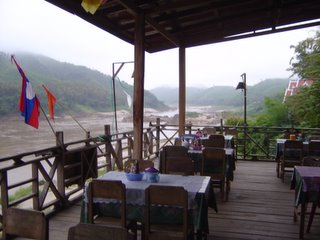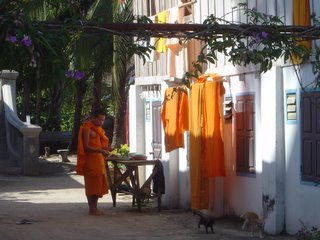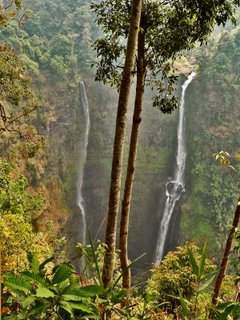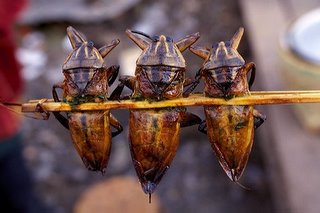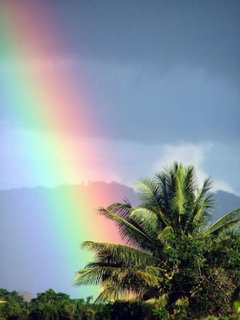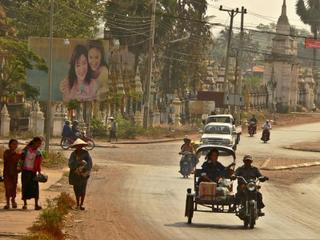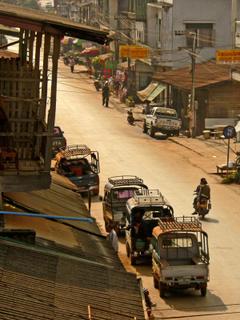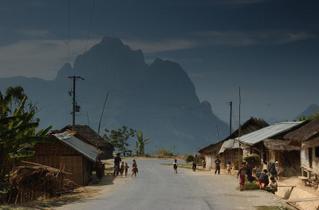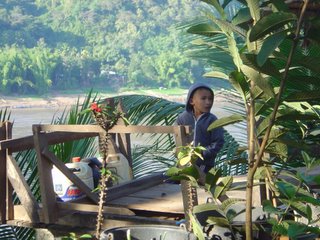 Last day! Screaming hangover from hell from the Long Island Iced Teas. All ideas of a day trip to Ayutthaya out of the window. Eat loads of fruit and eat three muffins from Suk 11's excellent breakfast selection.
Last day! Screaming hangover from hell from the Long Island Iced Teas. All ideas of a day trip to Ayutthaya out of the window. Eat loads of fruit and eat three muffins from Suk 11's excellent breakfast selection.Decide to go to the KSR. Get skytrain and river taxi again. Sit in a couple of bars and watch Sesame Street for a while. KSR is one way, a policeman sits by his bike and gives tickets out every two minutes until he is bored. Bare chested english drink beer, loud israelis slsp each other on the back. Hippies sell handbags and maps. Expats rub tiger balm on themselves and inhale Vicks like its something new. Have a couple of M125's to try and come round.
Remember about the roti shop round the corner. Lovely chicken massiman and roti.
Jump back on river taxi and all the way to Nonthaburi. Wander round buy some fruit and back to Suk.
Really just killing time now and camp out at Cheap Charlis until 20:30 and get taxi to Don Muang. 'How much you want to pay?' 'Just put the the meter on' 'No' The stupid thing is the price I actually negotiated was less than the meterd fare and the tip I would have given. So he got 240baht instead of the 300 he would have got if he had been straight.



